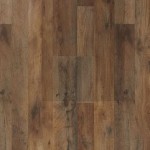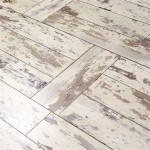Which Is Best for House Flooring: Tiles or Granite?
Selecting the appropriate flooring material is a critical decision in home construction or renovation. Flooring impacts aesthetics, functionality, maintenance requirements, and the overall value of a property. Among the many available options, tiles and granite are frequently considered due to their durability, visual appeal, and relative ease of maintenance. However, each material possesses distinct characteristics that make it suitable for different applications and preferences. A thorough comparison of tiles and granite is essential to make an informed decision.
This article will provide an in-depth analysis of tiles and granite as flooring materials, encompassing their composition, installation methods, advantages, disadvantages, and cost considerations. It will explore various types of tiles, including ceramic, porcelain, and natural stone, and compare them to the properties of granite. By examining these aspects, homeowners and construction professionals can more effectively determine which material best aligns with their specific needs and design objectives.
Understanding Tiles as a Flooring Material
The term "tile" encompasses a wide range of manufactured and natural materials used for flooring, walls, and other surfaces. Typically, tiles are thin, flat pieces created from clay, stone, metal, glass, or a combination thereof. They are available in diverse shapes, sizes, colors, and patterns, providing extensive design flexibility. The manufacturing processes and materials used significantly influence the properties and performance characteristics of different tile types.
Ceramic tiles are one of the most common types of tiles. They are manufactured from clay that is kiln-fired at high temperatures. Ceramic tiles are generally more porous than other types, making them susceptible to water absorption if not properly sealed. Porcelain tiles, on the other hand, are made from a denser clay and fired at even higher temperatures, resulting in a more durable and water-resistant product. This makes porcelain a better choice for areas prone to moisture, such as bathrooms and kitchens.
Natural stone tiles, such as slate, marble, and travertine, offer unique aesthetic qualities due to their natural variations in color and texture. Each stone tile possesses a distinct character, contributing to a luxurious and sophisticated ambiance. However, natural stone tiles are generally more expensive and require more specialized maintenance compared to ceramic or porcelain tiles. They can also be more porous and susceptible to staining, depending on the type of stone.
The installation of tiles usually involves applying a thin-set mortar to a prepared subfloor and setting the tiles in place. Grout is then applied to fill the spaces between the tiles, providing stability and preventing water penetration. The proper selection of grout and sealant is crucial for the long-term performance of tile flooring. Uneven subfloors or improper installation can lead to cracked tiles and grout, requiring costly repairs.
Examining Granite as a Flooring Material
Granite is a natural igneous rock composed primarily of quartz, feldspar, and mica. It is formed deep within the Earth's crust and is known for its exceptional hardness, durability, and resistance to heat and scratches. Granite is a popular choice for countertops, flooring, and exterior cladding due to its inherent strength and aesthetic appeal.
Granite tiles are typically cut from large slabs of granite and polished to a smooth, glossy finish. The natural variations in color and veining patterns make each tile unique, adding character and luxury to any space. Granite is available in a wide range of colors, from light grays and whites to deep blacks and reds, allowing for diverse design options. These color variations are a direct result of the mineral composition present in the specific quarry where the granite was extracted.
Granite is significantly less porous than many types of natural stone and ceramic tiles, making it highly resistant to staining and water damage. However, it is still recommended to seal granite flooring to further enhance its stain resistance and protect it from acidic substances. Regular cleaning with a neutral pH cleaner is essential for maintaining the appearance of granite flooring.
Installing granite tiles requires a similar process to installing other types of tiles, involving a thin-set mortar and grout. Due to the weight and density of granite, it is crucial to ensure that the subfloor is structurally sound and capable of supporting the load. Professional installation is often recommended for granite flooring to ensure proper alignment and a long-lasting, durable surface.
Key Considerations: Cost, Durability, and Maintenance
The cost of flooring materials is a significant factor in any construction or renovation project. Ceramic and porcelain tiles generally offer a more budget-friendly option compared to granite and natural stone tiles. However, the specific cost will vary depending on the quality, size, and design of the tiles. Natural stone tiles, including granite, tend to be more expensive due to the extraction, processing, and transportation costs involved.
Installation costs also contribute to the overall expense of flooring. While DIY installation is possible for some types of tiles, professional installation is often recommended for granite and larger format tiles, adding to the total cost. The complexity of the installation, the size of the area, and the preparation required for the subfloor will influence the final cost.
Durability is another critical consideration. Granite is renowned for its exceptional durability and resistance to scratches, heat, and impact. Porcelain tiles also offer excellent durability and are suitable for high-traffic areas. Ceramic tiles are generally less durable than granite and porcelain and may be more prone to chipping or cracking. Natural stone tiles vary in durability depending on the type of stone, with some being more susceptible to scratching and staining.
Maintenance requirements also differ between tiles and granite. Ceramic and porcelain tiles are relatively easy to clean and maintain, requiring regular sweeping and occasional mopping. Granite can be cleaned with a neutral pH cleaner and should be resealed periodically to maintain its stain resistance. Natural stone tiles may require specialized cleaning products and sealing to protect their surface.
Aesthetic and Design Versatility
Both tiles and granite offer a wide range of aesthetic options to complement various design styles. Tiles are available in a multitude of colors, patterns, and textures, allowing for extensive customization. Digital printing technology has enabled the creation of tiles that mimic the appearance of natural stone, wood, and other materials, providing affordable alternatives to more expensive options.
Granite, with its natural variations in color and veining, offers a unique and luxurious aesthetic. The inherent beauty of granite lies in its natural imperfections and the distinct patterns created by the mineral composition. Granite is often used in high-end residential and commercial spaces to create a sophisticated and timeless ambiance.
The size and shape of the flooring material also influence the overall design. Tiles are available in various sizes, from small mosaics to large format slabs, allowing for different design layouts. Granite tiles are typically available in larger sizes, creating a seamless and elegant look. The grout lines also play a role in the aesthetic, with different grout colors and widths influencing the visual impact of the flooring.
Ultimately, the choice between tiles and granite depends on the desired aesthetic, the functional requirements of the space, and the budget. Both materials offer distinct advantages and disadvantages, and a careful evaluation of these factors is essential for making an informed decision.
Environmental Considerations
The environmental impact of flooring materials is an increasingly important consideration for homeowners and builders. The manufacturing of ceramic and porcelain tiles involves energy-intensive processes, contributing to greenhouse gas emissions. However, some manufacturers are adopting sustainable practices, such as using recycled materials and implementing energy-efficient production methods.
The extraction of granite can also have environmental consequences, including habitat disruption and soil erosion. However, granite is a naturally abundant material, and its durability and longevity can contribute to a longer lifespan compared to other flooring options, reducing the need for frequent replacements. The transportation of granite from quarries to processing facilities and construction sites also contributes to its carbon footprint.
The use of sealants and cleaning products can also impact the environment. Choosing low-VOC (volatile organic compound) sealants and environmentally friendly cleaning products can minimize the environmental impact of maintaining tile and granite flooring. Proper disposal of waste materials during installation and renovation is also crucial for protecting the environment.
Vitrified Tiles Or Granite Which Is A Better Option For Your Home
.webp?strip=all)
Which Is Better Granite Or Marble Flooring Skytouch

Which Is Better Granite Or Marble Flooring Skytouch

Tiles Vs Granite Which Flooring Option Is Best For Your Home

Granite Vs Porcelain Tiles Which Is The Best Flooring Option

Benefits Of Granite Flooring For Your Home Chandan Marbles
Granite Flooring Types Colors Best

Durable Granite Tile Flooring High Style That Turns Heads
Vitrified Tiles Or Granite Which Is A Better Option For Your Home

5 Advantages Of Having Granite Flooring In Your Home
Related Posts








